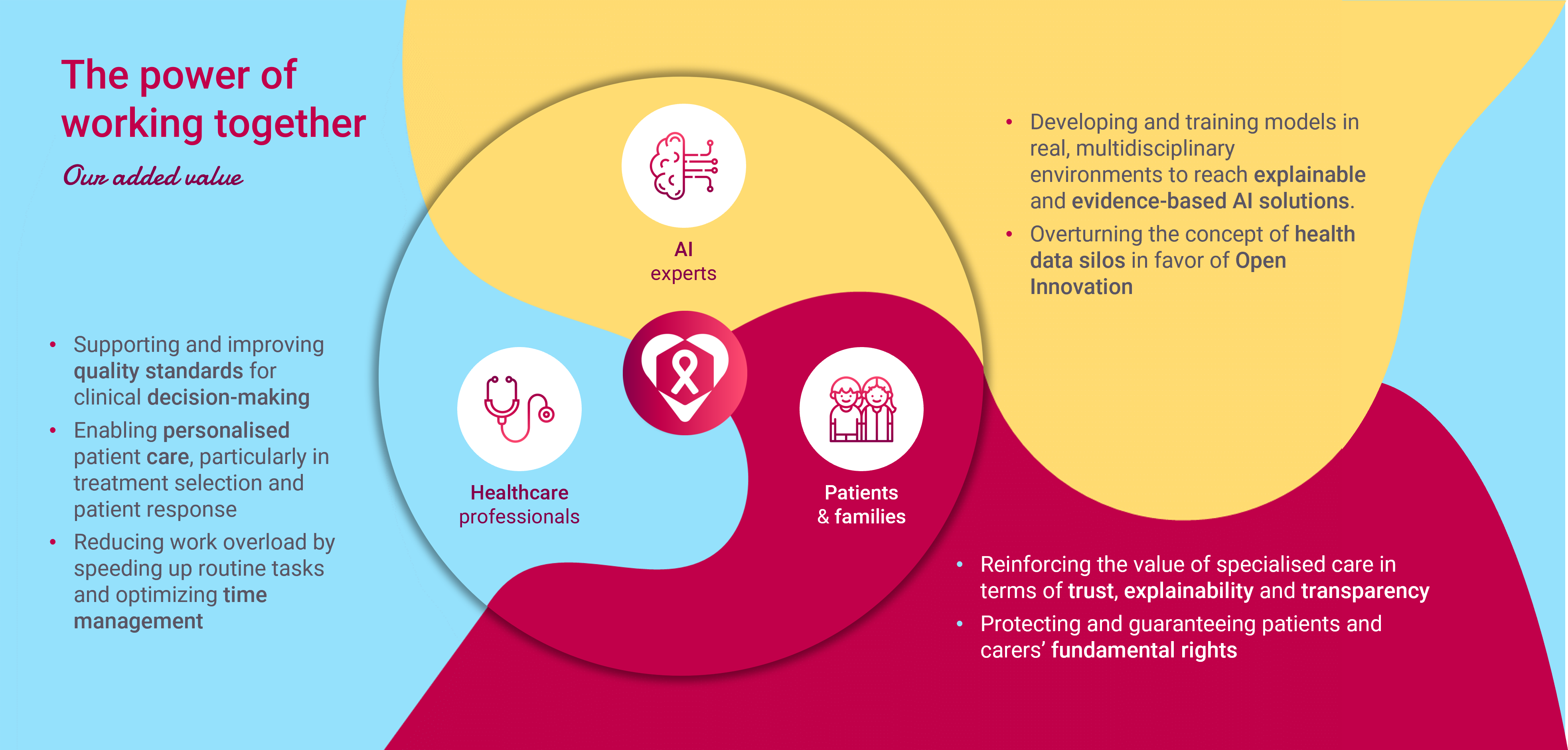Shining a Light on Childhood Cancer
Why Childhood Cancer?
Childhood Cancer represents the leading cause of death from disease for children and adolescents in Europe –accounting for 20% of deaths after infancy–and is a major contributor to morbidity in survivors. In 2020, over 15,500 children and adolescents were diagnosed with cancer in Europe and over 2,000 lost their lives to it. Pediatric cancer represents the leading cause of death from disease in children beyond the age of one: Leukaemia, accounting for 33% of all cancers, followed by brain tumours like Neuroblastoma, Nephroblastoma, and sarcomas are the most common types.
Many paediatric cancers are proving to have a genetically distinct component from their adult counterparts, demonstrating the need for childhood-specific genomic studies, datasets and therapeutic strategies.
Key Facts
Specificity is the Mark
Paediatric cancer has very particular characteristics, such as sudden occurrence, no early symptoms and a high recovery rate (increasing in the last decades) that must be considered.
Early Detection is Key
In stark contrast to adult cancers, paediatric cancers grow fast and may have already spread to other parts of the body by the time they are diagnosed.
Survivors Deserve Better
Up to 30% of children affected by cancer suffer severe long-term consequences. Comprehensive care, treatment and follow-up are essential to help them through a good recovery
and improve their quality of life.
Our Focus
We are setting the foundations for a European Childhood Cancer Ecosystem. Our ultimate goal is the creation of a multi-purpose crowdsourced ecosystem for Paediatric Cancer Genomic Data inventory, able to support a set of AI-based services for the detection, diagnosis, prognosis and treatment of several types of paediatric cancer (Neuroblastoma and Nephroblastoma).
Neuroblastoma
Neuroblastoma is a cancer that develops from immature
nerve cells (neuroblasts). It typically appears in and around the adrenal glands, which sit on top of the kidneys and produce hormones to help control body functions (heart rate, blood pressure, blood sugar, reaction to stress…). Other areas where groups of nerve cells are usually found – the abdomen, chest, neck, pelvis or spinal cord – can also be affected.
Neuroblastoma is caused by gene mutations and most commonly affects children age 5 or younger. It is often detected after the cancer has already spread to other parts of the body, such as the lymph nodes, liver, lungs, bones, and bone marrow.
Nephroblastoma
Also known as Wilms’ tumor, nephroblastoma is the most common type of kidney cancer in children. Regular kidney cells usually mature by the time a child is 3 or 4 years old, but sometimes they cluster and grow out of control, forming a tumorous mass. Nephroblastoma often affects just one kidney (unilateral), though it can sometimes be found in both kidneys at the same time (bilateral). It is often only detected when the kidney has grown to a size of about 4 times the weight of a healthy 3-year-old child’s kidney.
Though it is not usually inherited, Wilms’ tumor has a genetic background and most commonly affects children ages 3 to 4, becoming much less common after age 5.
Our Community
Childhood cancers are rare diseases. The only effective way to push forward research and ensure better care for children with cancer is through active collaboration, transparent communication and a solid knowledge exchange. We aim to harness the power of AI and real-world data into meaningful applications that can be integrated in the clinical practice to transform the way we diagnose, treat and care for children and adolescents living with cancer.

